The Gift of South Dakota
Subscriptions to South Dakota Magazine make great gifts!
Subscribe today — 1 year (6 issues) is just $29!
A Creative Utopia in Aberdeen
Jan 9, 2020
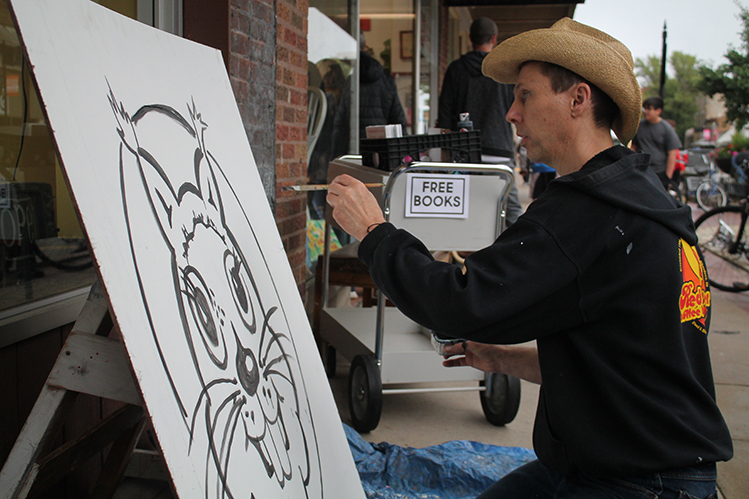 |
| Dan Cleberg, co-owner of The Red Rooster in downtown Aberdeen, works on the early stages of a painting during a recent Aberdeen Fallout Art and Music Fesitval. |
There's something different about Aberdeen. This off-highway town of 26,000 or so, built on a swampy, windswept lowland by the Chicago, Milwaukee, and St. Paul Railroad, hasn't just survived the overall decline of the rural, Midwestern railroad town. The Hub City still thrives, and not just economically.
Many Aberdeeners point to local coffee shop the Red Rooster as a percolator of contagious creative vibes. Brother and sister team Dan Cleberg and Kileen Limvere started the venture in 1996. The town/neighborhood coffee shop can be a cliché, a place where "outsiders" gather and form their own "in-group," a kind of anti-Applebees struggling — against its own constraints — to be outré. The Red Rooster is something else — a place as inclusive as a Walmart, but where people gather for a higher purpose than Black Friday scrapping over a hot dog roller.
The Rooster — and its offspring the Fallout Creative Community — has become an incubator for local cooperative arts, taking care to welcome everybody, whether you're fashion-challenged, differently abled, even people who listen to Don Henley. Fallout is the antidote to the corporate-sanctioned "creative" world monoculture, a place where everybody has value — people who maybe couldn't monetize a hot dog hawking their online commodi-self — can still contribute. Millennials screamlessly interact with elders. Free-range children roam. Working class people redefine what it is they "do." Unabashedly un-Hollywood people effortlessly flaunt their own self-worth.
Aberdeen’s Fallout Art & Music Festival is unique. There is no stardom in South Dakota. "Influencers" are so rare here, their influence itself must get stopped at the state line. Still, the ideational equity you'll find at the Fallout is something to see, like a primitive communism of the personae where likes are distributed to each according to need. The whole scene at the Fallout Festival is so casually inclusive it could almost invoke emotions.
"The Fallout starts back shortly after the coffee house, which was ‘96," recalls Dan Cleberg. "I wanted the coffee house to be a place where we could have art — so we had a space for a gallery — and music. I had a little stage here for folks who play. And, so of course artists and musicians lined up. Eventually people started stepping up who weren't identifying themselves before as artists and musicians. So this really cool scene started happening.
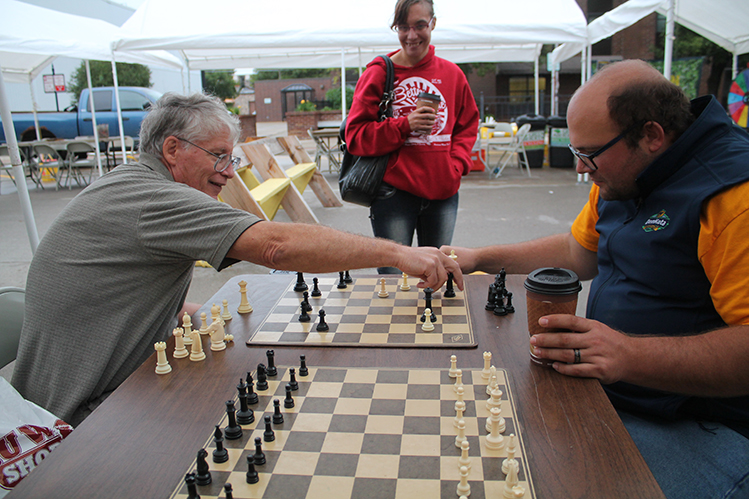 |
| Chess at the Fallout Festival. |
"And I had lived in a community in Chicago that served street people, people who needed service. I got this community bug and I came back and started talking to folks back here in Aberdeen about the idea of putting our efforts and resources together to serve the community at large.
"So I had this apartment building that had upstairs, main floor, basement and these guys move into it and instead of being three apartments, this became one big house. And we started seeing what we could do to help out the community. Back in that time, the high school was still just down the street from us. All these high school kids were coming and going around downtown. And we decided to invite a bunch of high school kids over to the house every Thursday. We'd get a little food from the Salvation Army. They'd hook us up, we'd feed them, and we have conversation. That was the only agenda. It was an experiment in community building.
"For this group of about thirty to thirty-five high school to college age kids, this was a really important thing. They'd go in, they apply for a job and they write it on their application, "I have to have Thursdays off." That's how important it was to them. So out of that group, we started doing some — like we throw up a party in the yard with a lot of art supplies, a stage, four bands, acoustic things or poetry and some crazy sport type thing like wrestling on old mattresses or bowling where the ball hits a ramp and smashes into a car or something like that. That would draw about eighty to a hundred people to these parties.
"So all this really cool creativity and community building stuff was happening. Now we need a mission. There's a lot of energy, but what's the point of us being here? I kind of pitched that to everybody. At some point, some guy who hung out at the Coffee House came to me and said, long story short, he wanted to play on our stage. I've never known him to do any music at all. So we're going to get Richie out of his isolation.
"And that made me think of this other guy, Bruce [Likness], who had been hanging out here since we opened and he's another guy with some mental and physical disabilities. We got him some paints and canvases and he did this really cool kind of outsider art. "Then he started telling me about his background. He doesn't know who his parents are, so he made up this — based on science fiction movies — ideal background story. His mom was an alien from outer space that comes down and takes on human form. His dad's a professor who doesn't believe in aliens. They fall in love, she keeps it hush-hush. But then the bad aliens come down and kill his parents. He gets adopted, and that's where he grew up. And, uh, he was always a little different, because he's half alien."
"I had the story of Quadman in my mind for years," says Likness. "I like the stories from different sci-fi shows and movies like Star Trek, Aladdin, Batman, Xena and Gargoyles and I took ideas from those stories and made them my own story."
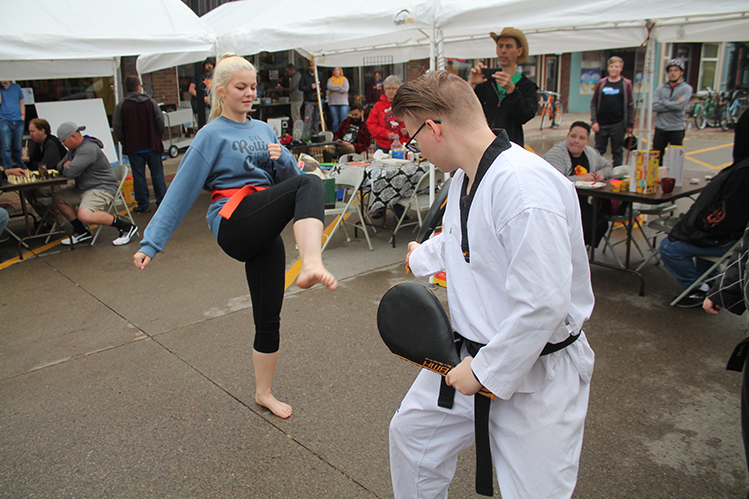 |
| A martial arts demonstration. |
"So we started making a film out of it with this little camera," Cleberg recalls. "In the meantime, all these creative people start hopping on board, and the story started expanding. This film that we thought we would show our friends in a week took about a year to complete. We had this full on opening... the red carpet and there's a line down the street."
Tom Black was one of those people who didn't get in to that first showing. "I had just moved back from Phoenix," Black recalls, "one night just driving down Main Street. There was a line of people all dressed up going into the Red Rooster. I tried to get in, but it was sold out. And I just wanted to go in out of curiosity. It was the world premier for a very independent, guerrilla-produced film called Quadman, and I thought, wow, that's pretty cool. Then a few months later, a friend of mine said something about how Aberdeen had really no presence in independent film.
"So I thought, let's just start a short filmmaking competition to see what comes from that. And we did. We just started a filmmaking competition that still runs today called the Fischgaard Short Film Project.
"Then the genesis of the South Dakota Film Festival came from that. We sat in a room at the Capitol Theater and had a conversation: 'Hey, do we want to do an independent film festival here in the state? In Aberdeen?’ And the consensus was yes. Less than six months later we had the first festival on the ground."
The story demonstrates how the arts institutions of a place like Aberdeen, like South Dakota as a whole, can originate, not from the pronouncement of some mega-celebrity, but from a scheme cooked up over coffee.
"Meantime with Bruce," says Cleberg, "it turns out, you get a guy out of isolation and get him in community around friends and let him be creative, that does a whole lot of good for him."
"Being in the Fallout helped me make friends and gave me many chances to do creative things," says Likness. "And helped me to overcome negative habits and thoughts by getting me to focus on positive things. I had a new life that included friends and music and writing and filming. My life wasn't just about work and problems with my disability."
"So I'm thinking about Richie," Cleberg recalls. "I'm thinking about Bruce, thinking this could be our mission: find people who are on the outskirts, adapt ourselves to include them. So I pitched this idea to the group and they were like, 'Of course, that's kind of who we are already, we just need to be more intentional about it.'"
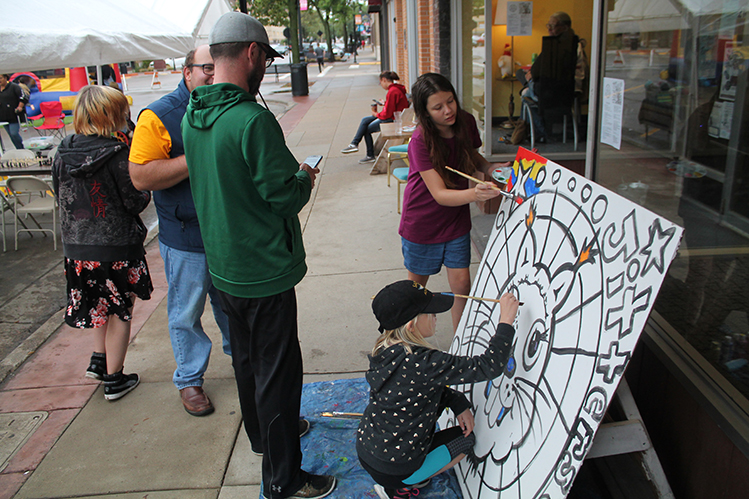 |
| Community members work on a soon-to-be colorful mural. |
Over the years that mission has manifested in a range of creative projects, from the weekly Arts & Music night to the annual Arts & Music Festival, Cap'n Ralf & the Convocation's Loud X-Mas Concert, and the touring, anybody-can-join band, Better Ride. Some of those projects, like Better Ride, hit the road on occasion, but the Fallout community's ground central is still the Red Rooster.
Amy Sanderson, the Adult Clinical Director at Northeastern Mental Health Center, has witnessed positive impacts on the Aberdeen area through the Fallout community's efforts to creatively engage people who might otherwise have been isolated. "I think Fallout has created a place where people can find community," Sanderson says, "where people can feel connected, and belonging and purpose. For our clients here — with mental health issues in particular — we know the benefit of having positive art outlets, and it's been a nice opportunity to get involved with some of those activities."
Fallout pulls in a wide range of people, not all of whom are differently abled. Originally from Milwaukee, family members convinced William MacDonald to move to Aberdeen for work. He did, then the family moved away. He says Fallout is the reason he's stayed. "Ever since I found the Red Rooster," says MacDonald, "I fell in love with it and what they're doing."
He volunteers frequently helping set up or tear down for events, occasionally singing with Better Ride. The Fallout is now his only connection to Aberdeen, and that seems to be enough. "It's just the love of doing something for our community," says MacDonald. "It's better than church to me. I fell in love with Aberdeen once I got to the Rooster, that was it for me. I don't care what job I have. There's a lot of things going on down here that's good for our community and I want to be a part. I'm a hundred percent, no turning back for me."
For Cleberg, the Fallout is an all-around reciprocal operation. "We're not helping anybody. We're building community. And within community, everybody has their own ability. You just look at a human being and you get to know them as a friend, and eventually you see what their gifts are and then you tap into that and you and they appreciate that because now they're being useful within the community."
He hopes that fallout from the Fallout will flower in other communities. "I want to figure out a way to duplicate our model anywhere. That's part of what we do is when we take our festival and we shrink it down into a trailer. We go to other communities around South Dakota and just kind of tell our story and hopefully plant a seed of the idea that this can happen in other places."
Michael Zimny is the social media engagement specialist for South Dakota Public Broadcasting in Vermillion. He blogs for SDPB and contributes arts columns to the South Dakota Magazine website.


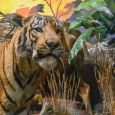
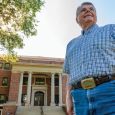
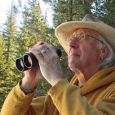
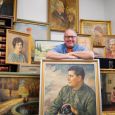
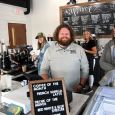



Comments
Great job on the article!
Introduction
Hello,
Please allow me to take a few minutes of your time to introduce myself.
My name is Mark Hamson and before moving to Aberdeen, I lived in Kingman Arizona, I owned and still own a business called Shuriken Promotions LLC.
I promoted not only events, but promoted bands and made independent films.
Before Shuriken, I was a professional kickboxer and a Stunt Actor for not only Hollywood films, but independent films and commercials. I also write film scripts.
I would like to offer my services and experience to like minded people such as yourselves, for not only the love of telling a story, but most importantly to make
a living doing what we love.
Please allow me to enter into your circle and prove myself to you, by giving me a call
or email.
Sincerely,
Mark Hamson